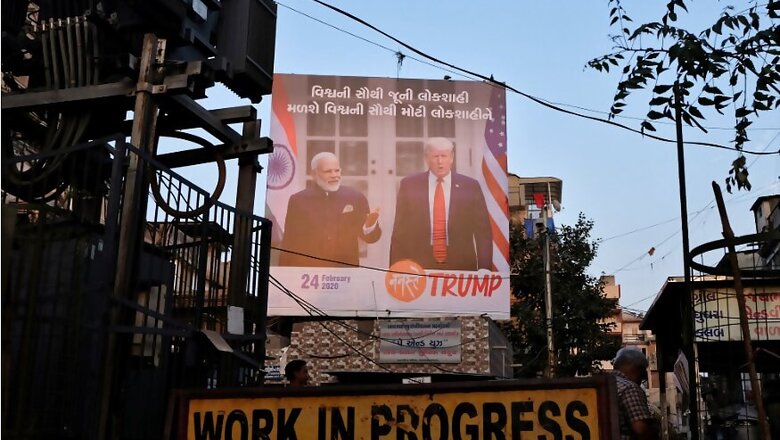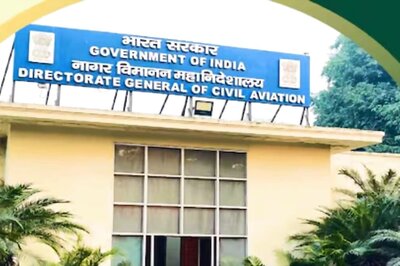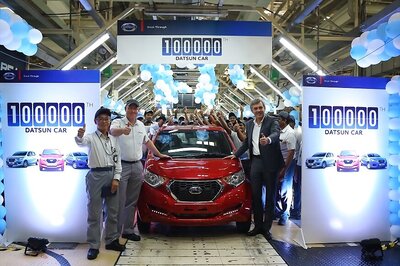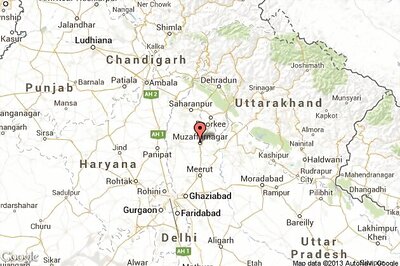
views
New Delhi: Monday's meeting between US President Donald Trump and Prime Minister Narendra Modi is the fifth between the two leaders in eight months. Four of these five have been on the sidelines of multilateral events across the globe, including one in the US itself on the sidelines of the United Nations General Assembly (UNGA) in New York last September.
Trump’s visit to India is his maiden one and even though there are several questions being raised about the deliverables for Delhi during this visit, a senior government source had this to say: for emerging powers, incoming visits should not be seen only in transactional terms. Not every visit can have big-ticket deliverables.
So what do visits of this nature achieve and what goes on in the background to pull-off these high-profile visits? Let's take the example of Trump's visit itself.
India has awaited his visit for two years. It was in 2018 that India sent feelers to Washington, DC — at that time with a desire that he could be the chief guest at the Republic Day parade.
The Modi government had managed to get former President Barack Obama as a chief guest in 2015, making him the first American President to grace the prestigious occasion, although this was in the final year of his presidency.
But buoyed by the success, an attempt was made in 2018 to bring Trump for next year’s Republic Day parade. But not only did the White House not respond to the request, the eternal wait for the same saw media reports coming out with details, making matters more complicated with clear embarrassment in store.
The Ministry of External Affairs (MEA) did some salvaging by suggesting that the invite for him was an open one and that Trump could visit India whenever he so desires. So here it is now, technically an effort of two years culminating with a visit yet again in the last year of his current presidential run.
However, sealing the dates for a visit is just one part of the humongous preparation effort that follows. Starting from routine like security, protocol, locations to be visited and their significance for the incoming guest to the more concrete like talking points during the meetings - both delegation level and the restricted meeting between leaders to the joint statement -- are not just time-consuming but entail constant engagement with back-and-forth between the two sides.
With a powerful leader like the US President, the Secret Service vets all locations and takes calls on where the leader can and cannot go. For instance, it appears that the US security cut down the roadshow route in Ahmedabad from 22 km to nine. One of the reasons cited was the curves on the route posing an issue for the pilot cars in Trump’s motorcade to make sharp turns. It was stretching the time for the roadshow to beyond what was initially considered.
It also took a lot of convincing from the Indian side to finally get a go-ahead for the Sabarmati Ashram visit. The US side was also explained that no dignitary who had visited Ahmedabad had skipped a visit to the Gandhi Ashram.
On some issues like the joint statement, work is on till the very last minute. A joint statement is not just a message of intent but reflects the depth of relationship, hence is considered a very important aspect of diplomacy. Former diplomat Vishnu Prakash explains that “the more important the visit, more critical are the discussions” surrounding the joint statement. He also points out that discussions happen virtually till the last minute and some paragraphs could be bracketed for the External Affairs ministers or principals to look into.
In the current visit, a senior government source pointed out that India was looking at a powerful joint statement that was strongly worded on terrorism and also showed intent for a future Free Trade Agreement (FTA). The US will include a mention on Indo-Pacific.
Meanwhile, a question asked quite often is why have these bilateral visits when leaders any way hold talks on the sidelines of multilateral and global events. Prakash explains it with an analogy: he says that in simplistic terms, the difference is one between meeting at a hotel or a restaurant and inviting someone for a homestay. “A homestay is always more memorable,” he says.
That aside, Prakash says a bilateral visit gives the leaders a longer duration to be with each other, which could go up to even 10 hours together as we saw in the case of Chinese President Xi Jinping's visit to Mahaballipuram last year. This gives them a chance to discuss the relationship threadbare whereas bilaterals, or pull-asides, as they are sometimes called by leaders at mutilateral events, do not end up being longer than 30-45 minutes.
A few have also blamed outstanding bilateral issues between countries overshadowing meetings of groupings. An example here is the SAARC forum. More often than not, the entire focus would veer towards issues between India and Pakistan rather than what the grouping was doing. Since 2016, there has been no summit-level meeting since India boycotted the one in Islamabad after the Uri terror attack.
As India rolls out the red carpet for Trump, along with an added element of a massive rally in Ahmedabad, questions have also been raised on the cost of such extravagance. This will be apart from the usual bilateral meeting held in Delhi's Hyderabad House.
The estimated cost of the Ahmedabad event has been reported as Rs 100 crore although there is no official figure and the estimated number of people involved is approximately two lakh. Several lines of defence have been offered for the event -- from this being an opportunity to showcase India to a powerful leader to the country, as an emerging power, being able to make such events larger-than-life for the outside world to sit up and take notice. Many diplomats believe that with the dynamic geopolitical chances across the world, soft diplomacy has to be mixed with hard-nosed negotiations to be able to manoeuvre tricky international situations -- for that, bilateral visits such as these are vital opportunities.



















Comments
0 comment